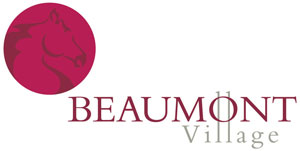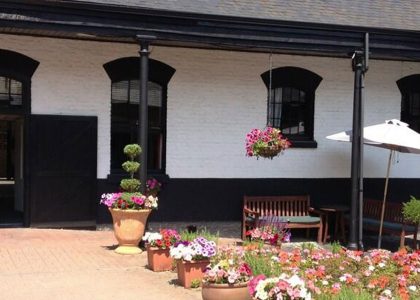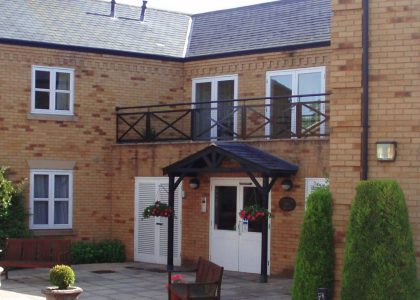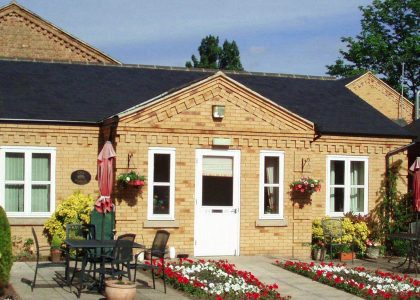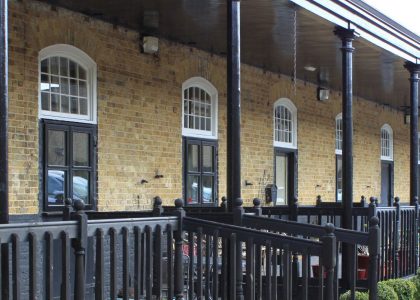SHORT/LONG TERM LETS AVAILABLE ON-SITE. CARE AND SUPPORT 24 HOURS A DAY.
CLICK HERE TO SEE OUR AVAILABILITY AND PRICES PAGE FOR MORE INFORMATION.
THE HISTORY OF BEAUMONT VILLAGE AND ALDERSHOT.
THE PRELUDE TO ALDERSHOT.
Great Britain had not been in conflict since the Battle of Waterloo in 1815 and the new generation of officers had never seen active service. The lack of a cohesive fighting force for one of the main powers in Europe was unthinkable and the matter was brought to the attention of Queen Victoria and Prince Albert.
After the success of The Great Exhibition in 1851, Albert gave the order for a major training camp to be set up on the heath land at Chobham, under the auspices of Lord Hardinge, in the summer of 1853.
A PERMANENT CAMP.
The ‘Great Camp’ became one of the most popular showpieces of the Victorian era. The Queen herself watched the troops on a number of occasions and Prince Albert served with his regiment. The popularity of the Camp continued to soar throughout the summer. By August, the event was being wound down but the success of the Camp, particularly with war looming in the Crimea, provided much needed training for the military.
It was decided that a permanent camp, with an adequate water supply, was required for the army to use all year round. By October 1853 land had been purchased at nearby Aldershot for the relatively low cost of £12 per acre. Not only was Aldershot, like Chobham, within easy reach of London via the railway stations at Farnborough and Farnham, but the surrounding countryside bore a marked similarity to the terrain in the Crimea.
WAR IN THE CRIMEA.
The Crimean War, which began in 1854, was to teach the British Army many harsh lessons, including the need for excellent lines of communication and proper sanitation to keep men and horses healthy. Both the barracks and stables at Aldershot were eventually modified in order to take account of these lessons but initially at least life at the new, permanent camp was rudimentary at best.
A CENTRAL INFIRMARY STABLE.
As the British Army constructed its new camp during the 1850’s and 60’s it undertook a number of projects to sculpt the surrounding area to its own unique needs. One such major undertaking was the building of the retaining wall in 1854 surrounding Mount Pleasant on the southern ridge, the land which was to become the Southern or Beaumont barracks.
A closer look at a contemporary map reveals the original landscape, with the land sloping gently upwards to a narrow ridge southwest of the military or Thornhill railway, before rising more steeply towards the police station on Mount Pleasant. The soil in this area was ‘Bagshot Sand’ – poor quality not suited to heavy construction – but the small ridge did provide good drainage and was therefore considered suitable for a small range of stables. With political pressure being applied in the aftermath of the Crimean War, when so many horses had been killed, this location was finally chosen for the building of a central infirmary stable. In 1858, construction was begun on the three ranges of infirmary stables.
ATTENTION TO DETAIL.
Constructed to serve east, west and south barracks. Each block of barracks was serviced by one range of stables. Each of the ranges consisted of 24 individual stables broken down into 16 stalls and 8 loose boxes. This was adequate for the number of horses stabled in peace time. The wards were designed to be both practical and flexible; each was fronted with a veranda which enabled the horses to be moved whilst still remaining under cover. The infirmary was constructed in such a way so as to allow each horse its own stable and fodder with sufficient ventilation for the total number of animals.
Each stable block could be converted when needed into an operating theatre, recovery or treatment room. A number of hooks were installed allowing a horse to be restrained or supported by slings as part of its ongoing treatment.
A VETERINARY HOSPITAL.
The Infirmary Stables were originally built for the general upkeep and well being of the animals housed in Aldershot and were not designed to provide anything other than basic care. However, in 1901, after the bloody Boer War – when the army again lost over two thirds of it’s horses this time to infection and disease, the Army decided to expand the stable blocks and convert them into a Veterinary Hospital.
By 1906 plans were finalised to construct several new, dedicated buildings including an operating theatre, pharmacy, farriers and dressing shed. There was also to be a further range of stables on the south side of the site with accommodation for over 60 animals. A new isolation ward was also planned due to the fact that a major cause of the loss of horses and mules in the Boer War was the enforced stabling together of fresh and diseased mounts. The new facilities were finally finished in 1910 and served for a new generation of army veterinary personnel.
A ROYAL VISITING CIRCUIT.
War and became part of the Royal visiting circuit. The Veterinary Corps were used to demonstrate to visiting royalty and dignitaries the excellent qualities to be found in the British Army.
In 1933, King Feisal of Iraq – a close friend to Lawrence of Arabia – visited the facilities, earlier in the same year, the Emir of Katsina, Muhammadu Dikko, also paid a state visit to Britain and toured the Veterinary Hospital at Aldershot.
A TIME OF CHANGE.
However, in the 1930’s the British Army, like the armies of other nations, was making the painful transition from animal transport to mechanical transport. The procedure was known as ‘Mechanisation’. In ten years prior to World War 2 the British Army underwent the change from a service almost totally dependent on the horse for battlefield mobility to one totally committed to mechanical transport.
The site was still used during the Second World War but the need for horse management diminished dramatically with the development and use of 4 Wheel Drive vehicles such as ‘Willys Jeep’.
THE END OF AN ERA.
The accumulated skills and knowledge of hundreds of years of military horse management were soon to be made redundant. To the very last the cavalry, despite the lessons of recent war, believed that the horse was more than just an aid to mobility. It was also, they considered, a platform from which to fight, and they argued with passion the need for its retention in the service. Despite a powerful pro-cavalry lobby the order was given to dismount all the Regular cavalry except for a few regiments stationed abroad.
The age of the British soldier on horseback in any but a ceremonial role was at an end.
A PERIOD OF DECLINE.
Sadly, but perhaps not surprisingly, the Hospital at Aldershot went through a long period of decline after the Second World War. The stables were still used but more often than not only as a temporary facility for visiting mounted regiments whilst stationed in Aldershot. The Household Cavalry used the stables during the late 1950’s and early 1960’s and the last group to use the facilities as official barracks were the RC Transport Mules, who finally disbanded in 1965.
The stable blocks were taken over by the Royal Military Police; the Police left in 1995 and handed over the remaining stable blocks to the Garrison Stable Club.
The Infirmary Stables and Veterinary Hospital in effect ceased to operate in 2000 when the Garrison Stable Club left the site; the land was sold to Beaumont Village in 2000.
THE MOST NOBLE OF ALL ANIMALS.
Of all animals, the title of most noble has been given to horses throughout time and across the globe. From Sioux Indians to our own cavalry men, horses have been at man’s most glorious victories and his most ignominious defeats. To create the world’s first military horse hospital in Aldershot was a logical decision but it is the attention to detail in the architecture and fabric of the buildings which reveal how much the army cared for their horses.
INSPIRATION AND VISION.
To create a world class retirement community from the ruins of an old stables and veterinary hospital required a fully focussed vision rooted in a deep passion along with extreme patience.
The inspiration for the development was born several years earlier when one of the directors of Beaumont Village had witnessed first-hand how our society treats its elders. Jim Rice knew then it should be possible to offer this country’s older population a better alternative for their twilight years. Using this example as his motivation, Jim and co-director Dr. Mervyn Suffield were able to battle through all problems to create the village we can see today.
This development gives back choice to the over-55’s – they can involve themselves in village life as much or as little as they like – all the time knowing that they have the reassurance of professional medical and safety on site.
Contact us by calling 01252 346700, emailing: enquiries@beaumontvillage.co.uk
or click here to fill in our enquiry form.
Click on an image below to see a gallery of Beaumont Village.
